日本語に戻る
June 15, 2022
去年ころで日本語の勉強して、も何かしてを知っていると思わないけどね。(笑)
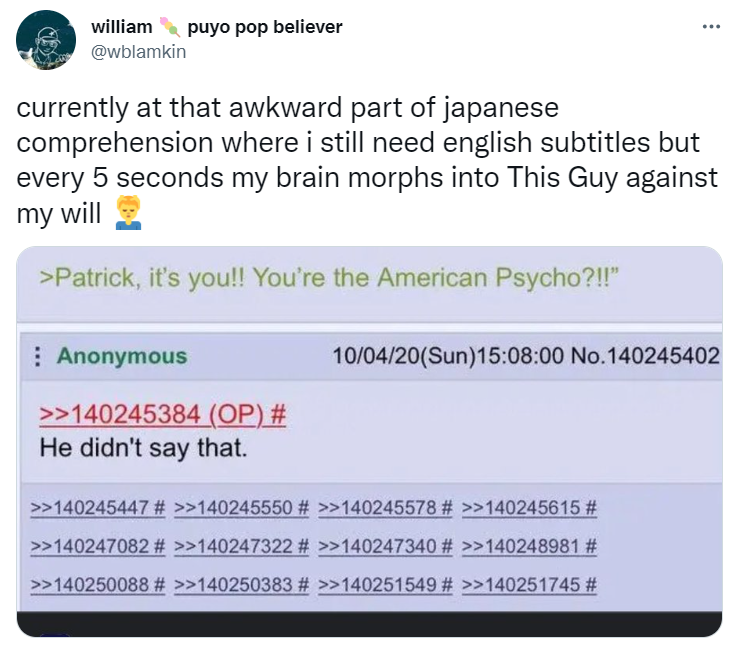
I…don’t really remember exactly why I started learning Japanese.
According to one of the learning programs I use, I took the plunge into serious study within the blurred out pandemic period on June 9, 2020. That’s not the exact date I began, nor the first time I’d tried, either; there were a couple other short-lived attempts in my early university years, and I still have paper left in a notebook I tried writing hiragana from one. I’m sure most attempts end up like this, where folks’ curiosity suddenly peters out when they can fathom the enormous wall of effort is needed to really learn, like any other discipline—which is quite normal.
So then, what, other than the massive amounts of time relinquished by summer lockdowns granted me the motivation to keep going? I honestly still don’t remember! 2020 was when I was still deep in the fandom trenches, probably deeper thanks to the circumstances, and since all the ones I “participated” in are around exports from Japan, even the fledgling understanding I gained made engaging with fanworks from the home country a whole lot more accessible.
But really, learning how to understand Japanese—like I’m assuming learning any new language is like—has made a whole bunch of things in the world that more accessible, sort of like putting a new pair of contacts atop my glasses, if that makes sense. A lot of times, I’ll stumble over some random phrase(s) on a label or someone’s shirt or wherever and go “holy shit!!! I can read that!!” or “hey! that’s a Japanese phrase spoken like an American! Weird!”
It’s also made just about every sphere I interact with not just more accessible, but interesting; since Japanese media has long since grown into ubiquity across a lot of cultures. (I used to joke that it’s a guaranteed fact every black boy growing up in an urban environment has at least one favorite shonen anime; after being around kids for the past few months I think it’s spread to every boy and nearly every girl at this point.) And not just the cultures in America, but the entire modern (first/western) world. In the introduction to Pure Invention: How Japan’s Pop Culture Conquered the World, author Matt Alt writes:
The story of Japan’s rise from postwar ashes into economic tiger is well-explored territory. So too the stock-market crash that brought the nation to its knees in the nineties. But big-picture narratives of politics and markets and finance can frustrate, for they fail to capture the way most of us really interact with Japan: through its products, on an individual and a societal level. […] Thanks in large part to the peculiar tastes of a generation of young Japanese consumers, precisely as their economic might waned, its cultural clout soared. Japan made itself rich after World War II by selling us the things we needed—all those automobiles, appliances, and portable electronics. But it made itself loved by selling us things we wanted. […] Gloriously weird yet strangely necessary, things like the Walkman, the Game Boy, or Hello Kitty, represent more than hit products. They transformed our tastes, our dreams, and eventually our realities as we incorporated them into our lives, from Tokyo to Toledo.
The book’s title likely already makes it seem like it’s all kitschy dramatizations and creator mythmaking with barely any mentions of politics—which actually isn’t the case here. It is written to appeal to a wide audience, but Alt gives plenty of historical context about individual’s lives and political shifts as he leapfrogs around the late 20th century and the 2000s to draw a thread to our digitally-drenched world. Overall, his thesis is that to understand how we got here, one needs to understand how the ingenuity of Japan’s craftspeople among the ashes of WWII led to their market dominance; how the radical leanings of early comics and anime creators led to their subversiveness compared to western fare (at least initially, I guess? plus how the minimal funding and accomodations of the very first productions standardized the piss-poor conditions of the latter industry); how the supposedly ineffable nature of かわいい led to videogames viral spread of cuteness…aaaaand how the progressive digitization of socialization led to message boards like 2ch setting the template for 4chan and all the vitriolic ideologies it spread around the internet today.
Anyway! As for personal throughlines, mine began similarly to a swathe of folks growing up in early 2000s religious houses: my childhood imagination getting captured by the twin collectible crazes of Pokémon and Yu-Gi-Oh!, then promptly having my initial card collections burned in front of my eyes by my Satanic-panicking parents. Like trying to hide porn in the advent of the internet, this did pretty much nothing to curb my appetite—and in the former’s case, since Pokémon games were kept firmly away from the ESRB T-rating barrier, throwing myself into the games was, well, fair game.
There were a couple of your obligatory infatuations with shonen anime that I can’t remember, slightly performative likings for Naruto and Dragon Ball or other over-the-top storylines that everyone watched around then, but nothing that really spoke to me. (I don’t even think I watched any anime I really liked and continue to like today until Kino’s Journey in like, 2018??) Since my limited access to videogames always raised their allure over anything else (among plenty of other reasons), that was where many of my formative fixations were born—including two games which probably had more influential obsessions than any I’ve had in the past years. But of any of Japan’s exports I’ve been obsessed with, there is one genre of game that did the most to pin the country down in my psyche.
the cleanest roll punish I've ever done in KOF, immediately made less impressive with the knowledge that this person should *not* have let me get away with that after Isla's hopkick, it's -5 on block
Fighting games. 格ゲーム。There is an immense among of things I can unpack about my relationship to these games that would take multiple posts to truly realize. At this point it’s a genre I still deeply enjoy and pay attention to—yet I am also painfully aware of the time investment it takes to really enjoy it that keeps me on the sidelines.
They’re pretty close to pursuing the real-life disciplines they feature and/or exaggerate, taking years of devotion to reach a competitive level—and from around 2013 to 2017, that grind was the star my life orbited around. I’m talking sinking hundreds if not thousands of hours into training and competing online and off; and if I wasn’t playing them, I was probably thinking about them, or watching videos about them. Including Japanese-language events where I had no idea what the people were saying, while still yearning to visit the glitzy or dingy arcades the country still had. At one of the two big events I competed in—one that I drove nearly 200 miles for and also happened to be on the weekend a hurricane blew through the area (the power got shut down through most of the venue, but this did not stop people from pressing buttons nor kept any of the tournaments from finishing on time)—I almost managed to make it out of pools into the main bracket.
Games made in Japan ship with Japanese voice recordings, naturally, but it took Street Fighter IV’s release in 2009 (I think?) for fighters to come with accompanying English dubs and the ability to switch between the two. Listening to all those grunts and yells and really-weird-if-you-think-about-it announcements of character’s special moves for a thousand plus hours buried those indecipherable lines into the bowels of my mind. Loading up those games after a short year of study suddenly made it possible to go “holy shit!!!! I can make out what these weirdos are saying!!!!” for a whole lot more than the tiny bits and pieces I had picked up before.
Mostly just the shorter phrases, though. And even then, there’s still the process of taking anything more complicated than subject-particle-object-particle-verb-ender, running it through your mental translator, and then trying to convert its meaning into whatever you interpret it to be.
Yet as hard as that is, it’s actually become one of the funnest parts of learning Japanese. Like I’ve written before, translations from one language to another, particularly for works intended to entertain, almost never literally match word-for-word—which is almost certainly impossible for translating anything remotely complex in Japanese to English. If you get down into the nitty gritty, something like さあ、この水で顔を洗って、洗って! could be semi-literally read as “Hey, wash your face in this water, wash it!”, but that sounds incredibly awkward to any fluent English speaker. Mentally making this into a naturally legible statement gives a listener a fairly big blank that can be filled in a bunch of different ways depending on the situation. (In this case, the official translation of this line is “Ugh! You’re filthy! Wash up already!”)
Going back to stories I’ve already experienced dozens of times over in Japanese is like returning to them for the second time—not the first, since there’s almost always something to miss on the first time that you’ll catch on your second go around. Yet with a new language, comprehending the whole thing with a new lens is the thing that was missed. There’s a couple other factors pushing my studies forward, including some pretty pivotal future plans (you might be able to guess if you go three posts back), but for now, simply trying to travel through tales in their native tongue has opened up my interests in a huge way.
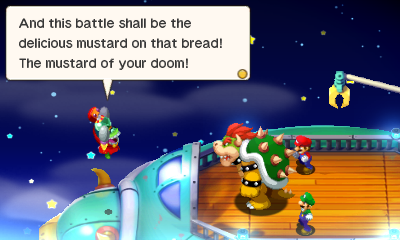
do you ever look at a line and go "what kind of tomfoolery in the original could have led to this tomfoolery?"
As for studying, the most of the learning resources I’ve used on have all been recommended by a single source: Tofugu’s “ridiculously detailed” guide to learning Japanese. Since I’ve never looked at any other big-picture guide out there after finding this one, I can’t compare it to any others—but obviously getting as far as I have with just its recommendations tells you how comprehensive it is.
It cuts and rearranges a lot of stuff around compared to traditional courses (at least supposedly, since I’ve never taken a language class since high school). Hand hiragana and katakana writing tutorials are tossed out for typing on computers and smartphones, overviews are interspersed throughout for how and why language ended up as it did. Most importantly, proper pronunciation and kanji vocabulary plus techniques to easily remember both are frontloaded early on. With a good foundation of vocabulary, the guide goes, you won’t have to spend much effort looking up phrases you don’t know, letting you focus on grammar when the time comes.
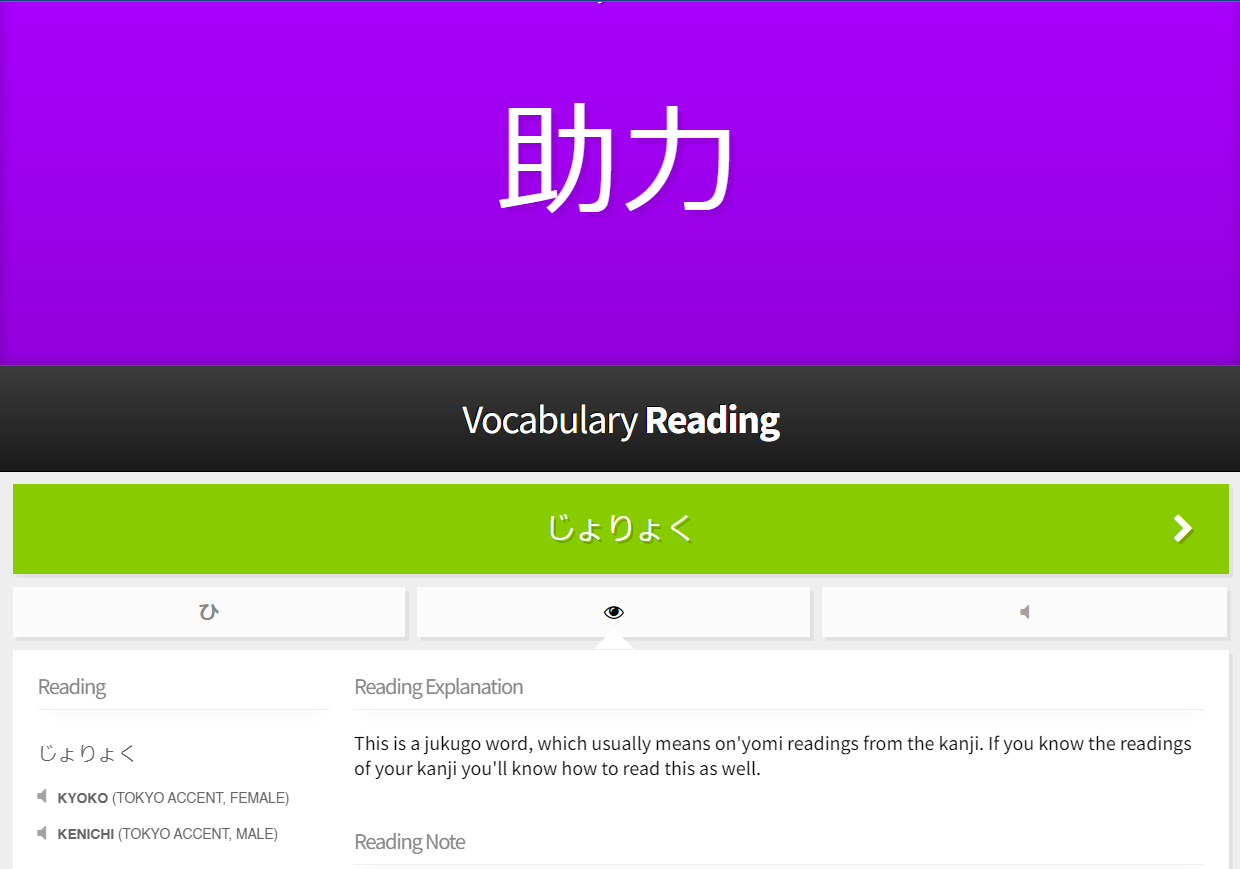
This is exemplified by WaniKani, the proprietary kanji-and-vocabulary learning program Tofugu runs. It’s a spaced repetition system (SRS), a flashcards-like learning technique that spaces out your reviews based on how well you retain something: if you get an item right, the time to your next review is extended; get it wrong and time is shortened. It also has an incremental approach, teaching you to recognize the individual radicals of a kanji before teaching its readings, then teaching you the vocabular those kanji have. Two of WaniKani’s three most obvious negatives are that there’s no English-to-Japanese quizzing functionality at all and that its curriculum can’t be modified, but at least in the latter’s case it’s organized in a way that resembles how frequently each kanji is used in the real world.
So far, I’ve found all of Tofugu’s assertions about the efficiency of its methods to be true…mostly. When I started with a textbook, I almost never had to look up the meanings or readings of anything, and a lot of Japanese out in the wild does use kanji—but quite a few resources made for beginner readers or stories aimed at native children don’t use kanji, some not at all. It’s not much of a problem when one of the main places you encounter the language are tweets from native speakers; when I wanted to see how my favorite kid-friendly videogame reads in its native language, I had a harder time recognizing the vocabulary extended out in hiragana without their kanji ticking my mind for me.
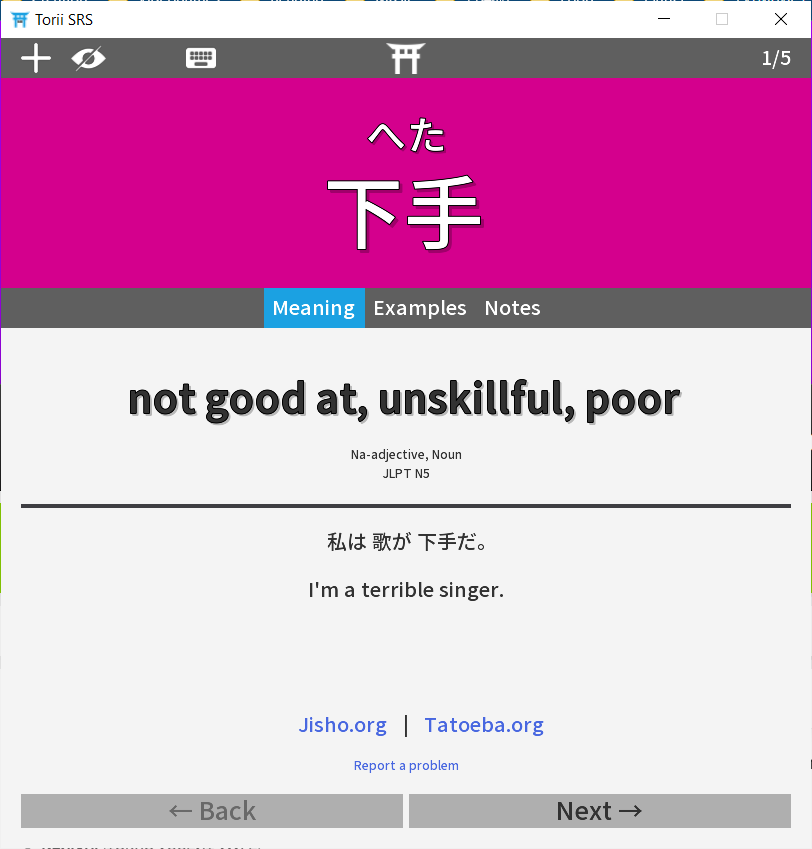
My solution for this? Another SRS program! WaniKani’s last big flaw is that its curriculum covers very little (if any?) hiragana-vocabulary (of which there is a lot of). Since watching all the items change colors and levels tick up gratifyingly kept me memorizing, I picked up another, free SRS from a smaller dev: Torii SRS. It’s much less feature-laden than WaniKani, but what it does have alongside hiragana vocabulary makes it a comparable option. You’ve got the ability to add your own custom items, group vocab into lists that can be studied individually, and different curriculums you can adjust based on your needs; including one tailored to work alongside WK by covering all the things it misses.
Of course, with all the hits of gratification these programs offer, it’s easy to fit them into your schedule despite how busy you get—making it easy to misplace your focus over the grammar needed to make use of them! That’s what happened when I picked up my first university textbook, the second edition of Genki I. It’s obviously made for a university classroom, with its pair work reviews and college student fictional examples, yet I’ve still found it useful as a self-learner.
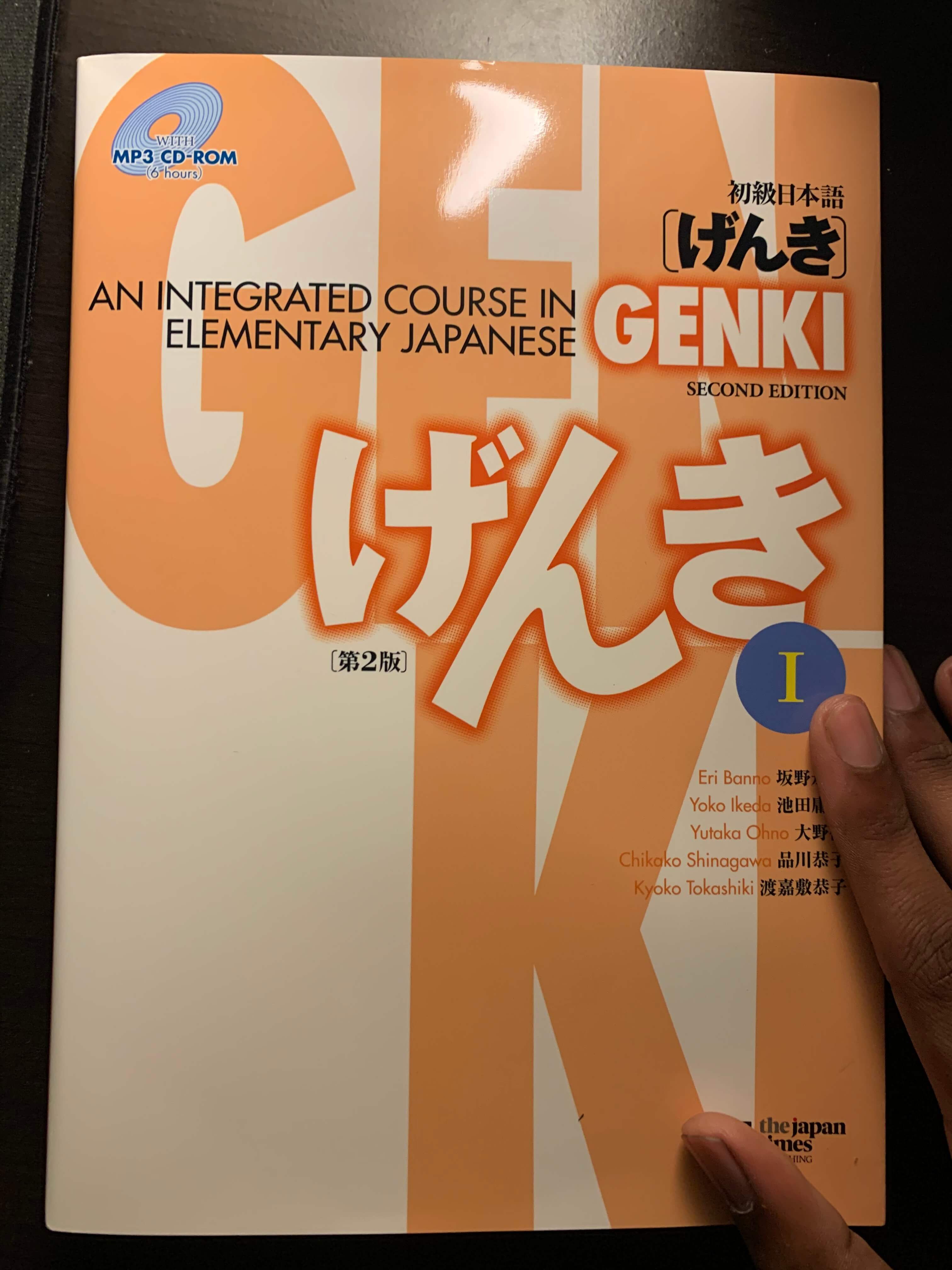
At first I managed to get through both the textbook and my vocabulary memorization at a steady speed, learning 10~20 new items in my SRSs before typing up a few seconds of grammar lessons in my notes a day (all early in the morning, before I would throw the rest of the day to writing, too!). Once the lessons ramped high enough in complexity around halfway through, the increase effort I had to put in fizzled out, all while I maintained the same pace with my SRSs. By the time I had moved out of my university town, I was cracking open Genki maybe once or twice per week and only looking at it for 10 minutes—while I was still chugging along my SRS programs, even faster in WaniKani’s case when I found a good iOS client for it. I recently picked up Genki II, but I haven’t even gotten to it since I’ve been reviewing all the stuff I’d forgotten from Genki I.
Though really, it kinda feels like I should even start my SRSs from the ground up? One year is a dribble in the bucket of language learning if you’re not in an environment that allows you to actively use it, and it’s already dried up some with little added to it for close to half a year. I still got some idle practice parsing out what little stuff I had the energy to focus on in the meantime—and my understanding of grammar actually managed to grow in the process—but I’ve lost graps of so many radicals and on’yomi readings and conjugations, I might be better off picking up the scattered leaflets while I reinforce what I remember instead of scrambling while trudging forward. I am taking a break from SRSs for a little bit while I try and get my grammar back to where it should be, at least.